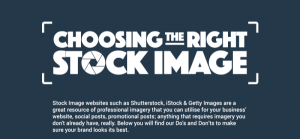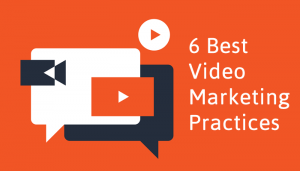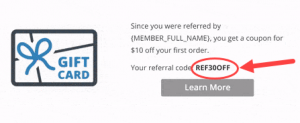Ever wondered whether organic or paid search is better for your company in the long run? Hint: the answer may surprise you.

You’ve spent a lot of time carefully crafting your latest lead generation campaign. It’s well-researched and nicely-designed. You are confident this piece will bring in all the leads.
Until it doesn’t.
What went wrong? Was the design not pretty enough? Was the offer not compelling?
Doubtful.
Most likely, you don’t have a content problem. You have a traffic problem.
In order for your lead generation campaign to really take off (that is, to bring in as many MQLs as you need to meet your goals), you have to make sure your campaign gets in front of the right people. In other words, you have to make sure you are getting the right traffic back to your site, attracting the type of leads who will convert on your offer.
One of the fundamental principles of marketing is getting the RIGHT content to the RIGHT audience at the RIGHT time. Of course, there are a lot of other artistic and psychological elements involved in creating a winning marketing campaign, but the basic tenet of the field relies on this concept.
If you miss this critical component, you aren’t really effectively marketing. You are really just operating on hope. And wasting a significant amount of resources along the way.
Instead of relying on hope, it’s important to map out your traffic sources before you begin launching your campaign.
There are two primary sources of traffic for any online lead generation campaign: organic traffic or paid traffic.
Organic vs. Paid Traffic
Simply put, “organic traffic” is website visits resulting from unpaid search queries.
Your organic traffic can come from search results for keyword phrases, from your blog visits or from social media posts that drive visitors back to your website or landing page.
“Paid traffic”, then, is an visitor arriving at your site or landing page as a result of something you paid for or sponsored, such as an advertisement.
Paid traffic generally results from native advertising, pay-per-click campaigns, retargeting ads or email list sharing.
As I said before, when you are choosing the right traffic source for your campaign, you need to think about finding the right channel for your desired audience.
Let’s think about how you can optimize each of these channels to best fit your goals.
Organic Traffic Sources
You can drive organic traffic using 3 primary sources:
Your blog
When it comes to using your blog as a means of generating traffic, you want to make your blog as visible across the internet as possible.
This means distribution of your content is critical. You can leverage other sources to share your content, like:
- Outbrain
- LinkedIn Pulse
- Reddit (make sure you understand the rules first)
- Community forums
- Local online news outlets
- Press releases to applicable media outlets
- Guest posting channels
- Influencer outreach
- SEO strategies
You don’t have to be a developer, an SEO expert or even understand code to be able to implement some valuable SEO strategies that will help you generate more website traffic, improve your keyword rankings and take advantage of local search queries.
One of the easiest ways to improve your SEO rankings is to make yourself discoverable on Google. To do so, make sure you have a Google My Business profile. Setting up a profile for your business is easy and offers 3 key benefits:
- Ensures that your company shows up in Google search results and in Maps.
- Gives customers instant access to your location, website, your phone number, and unique images related to your business
- Makes it easy to collect valuable reviews from satisfied customers, further boosting your search rankings.
Additionally, you want to ensure your onpage SEO elements are strong. By optimizing 5 key elements of each of your website pages, you can ensure that your site is setup to attract the most organic traffic.
- Social Media
Another easy way to drive organic traffic to your website is through your social media channels. But you don’t want to treat every social platform the same way. To effectively use your social channels to drive traffic to your site or your offer, you need to choose wisely.
- LinkedIn: perfect for targeting B2B prospects, executives and decision-makers
- Facebook: ideal for connecting with B2B and B2C audiences, less ideal for millennials
- Twitter: ideal for connecting with males and females ages 18-39
- Pinterest: ideal for targeting females ages 18-49
- Instagram: perfect for targeting millennials with B2C content; although some B2B companies are successful
- SnapChat: when geotargeting is your goal
- Medium: ideal for sharing content with B2B and B2C audiences
- Quora: perfect for leveraging thought leadership
Determining who you are trying to target will help you nail down which platform(s) you should focus on for driving traffic to your lead gen offer.
Pro tip: Don’t try to master all of these channels at the same time. Choose one or two to start with, then slowly work in additional channels. Otherwise, you may dilute your message or your resources, yielding fewer than desired results.
Paid Traffic Sources
If your budget allows, plan to incorporate paid advertising into your lead generation strategy. We strongly recommend allocating at least a modest amount each month to generating leads through paid sources, such as:
Native Ads
The most success that we have had utilizing paid advertising platforms has been through native ads on Facebook. It is robust, highly targeted and relatively easy to use. However, the ad platforms on Twitter, LinkedIn and Pinterest are also valuable, depending on where you audience is most active and the goals and objectives you are trying to achieve.
Regardless of which platform you use, you will have more success with these native ads if you direct your visitors to a dedicated landing page specific to that ad platform instead of to the same landing page every other traffic source is directed to.
Retargeting Ads
If you are electing to spend the time and money to implement paid ads, you want to maximize the results from these efforts. Otherwise, what is the point of setting up these ads, if you aren’t able to capture everyone’s attention? (Of course, no ad campaign will attract 100% of your audience, but with retargeting, you can recapture at least some of that audience.)
Some of the best examples of retargeting ads are those that appeal to the psychology of consumer behavior.
For example, if someone clicks on your original ad and visits your landing page but does not convert on your offer, your retargeting ad could say something like, “Did you forget something?” Or “Did time get away from you? It’s ok – click here to finish claiming this offer.”
Offering a second chance to finish opting in often leads to higher conversion rates than just one single touchpoint. Need additional proof? Just think about all of the times retargeting ads have worked for you as a consumer!
You can use both Facebook and Google to deliver your retargeting ads. However, at IMA, we prefer to utilize Facebook’s ad platform for its cost-effectiveness, its ease of delivery, and its ability to highly target your desired audience.
Email List Sharing
Another successful, though often overlooked method of paid traffic is email list sharing. Consider sponsoring an email send through a trade publication for your industry. Look into paid promotions available through industry emails. Or research opportunities for paid list exchanges with affiliate partners.
These efforts could introduce your product or service to an entirely new audience, giving you access to new outlets.
However, be cautious when going down this path. Make sure you select an opportunity that aligns with your business goals and your campaign budget. While this can be a great avenue for generating traffic, it could mean throwing money away if you don’t select the right channel or partner.
One other note: we are not suggesting to purchase email addresses from a mass list. This strategy seldom works, due to the risk of high spam rates, which could harm your email sender score. Instead, you will want to focus on email contacts who already have interest in your product or service through affiliate relationships.
Digital & Social Articles on Business 2 Community
(54)







